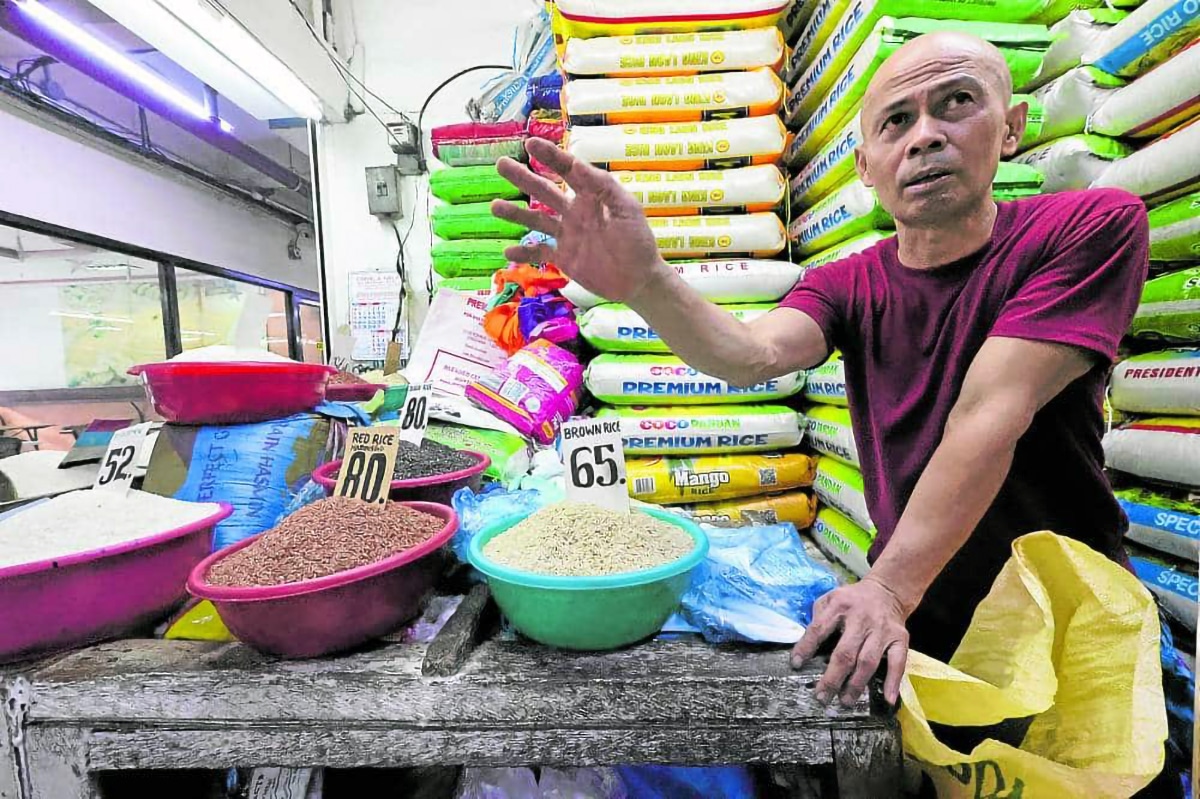Marcos amends tariff schedule

WAITING FOR PRICE CUT A rice vendor explains how he thinks duties affect rice prices. —GRIG C. MONTEGRANDE
President Ferdinand Marcos Jr. has issued an updated, comprehensive tariff schedule on various goods in a bid to “augment supply, manage prices and temper inflationary pressure” amid a slight increase in inflation last May.
Executive Order No. 62 prescribed the modified import duty rates on commodities in the agriculture, energy, and manufacturing sectors, which mostly maintained the reduced most favored nation (MFN) tariff rates while reducing rates on other essential items like rice.
In the directive dated June 20, the President stressed the need for a new multi-year and comprehensive tariff schedule to allow businesses to engage in medium to long-term planning to improve productivity and competitiveness, facilitate trade, and enhance consumer welfare.
READ: Marcos formalizes rice tariff cut via EO 62
“The implementation of an updated comprehensive tariff schedule aims to augment supply, manage prices and temper inflationary pressure of various commodities, consistent with the Philippine national interest and the objective of safeguarding the purchasing power of Filipinos,” Mr. Marcos said.
Article continues after this advertisementHe noted that last month, the National Economic and Development Authority (Neda) decided to maintain the reduced MFN tariff rates of certain commodities until 2028 and to impose zero duties until 2028 on battery electric vehicles, hybrid electric vehicles, plug-in hybrid electric vehicles and certain parts and components.
Article continues after this advertisementThe updated import duty rates on various products will be in effect from 2024 to 2028.
The President issued the modified import duties as inflation slightly rose to 3.9 percent in May from 3.8 percent last April.
The 455-page list of modified tariff rates included the reduction of tariffs on imported rice from 35 percent to 15 percent, which the Neda announced earlier this month.
EO 62 said the updated import duty rates will be periodically reviewed, while the MFN tariff rates for rice will be reviewed every four months.
Four-year regime
A check of the list showed that tariffs on commodities including raw materials, chemicals and products in the agriculture, energy, manufacturing, textiles, and pharmaceutical sectors were mostly maintained until 2028.
Imported rice, including unhusked, milled, and semi-milled rice and other rice varieties had reduced import duties from 35 percent to 15 percent.
Earlier this month, Socioeconomic Secretary Arsenio Balisacan said the government is hoping to bring down the price of rice to P29 a kilo for the poor, especially beneficiaries of the Pantawid Pamilyang Pilipino Program.
The modified tariff rates were also expanded to cover battery electric vehicles, hybrid electric vehicles and plug-in hybrid electric vehicles which had zero duties.
Republic Act No. 10863, or the Customs Modern and Tariff Act, stated that the President, upon the Neda’s recommendation, may increase, reduce or remove existing rates of import duty, including any necessary change in classification.
Mulled action
RA 8178, or the Agricultural Tariffication Act, as amended by RA 11203, also authorized the Chief Executive to increase, reduce, revise or adjust existing rates of import duty up to the bound rate committed by the Philippines under the World Trade Organization Agreement on Agriculture and the Association of Southeast Asian Nations Trade in Goods Agreement.
Meanwhile, agricultural groups remain adamant that EO 62 will lower the rice prices while an analyst suggested that problems in the rice retailing system should be addressed.
READ: Gov’t slashes tariff on rice imports to help cut local prices
Federation of Free Farmers national manager Raul Montemayor said it will decide soon along with other farmer groups on other possible legal steps to take.
“We feel bad about it because it was done hastily and clandestinely by the Neda board without giving us the opportunity to present our side,” Montemayor said in a Viber message.
Montemayor added that the groups will finalize their actions before Sunday.
Jayson Cainglet, executive director of the Samahang Industriya ng Agrikultura, likewise, noted that Balisacan should have called a hearing through the Tariff Commission.
“All tariff reduction proposals are submitted to the Tariff Commission,” Cainglet said in a Viber message.
For Cid Terosa, senior economist at the University of Asia and the Pacific, while tariff cuts can bring down rice inflation theoretically, the inefficient trading and retailing of rice may impose additional costs that causes prices to remain high.